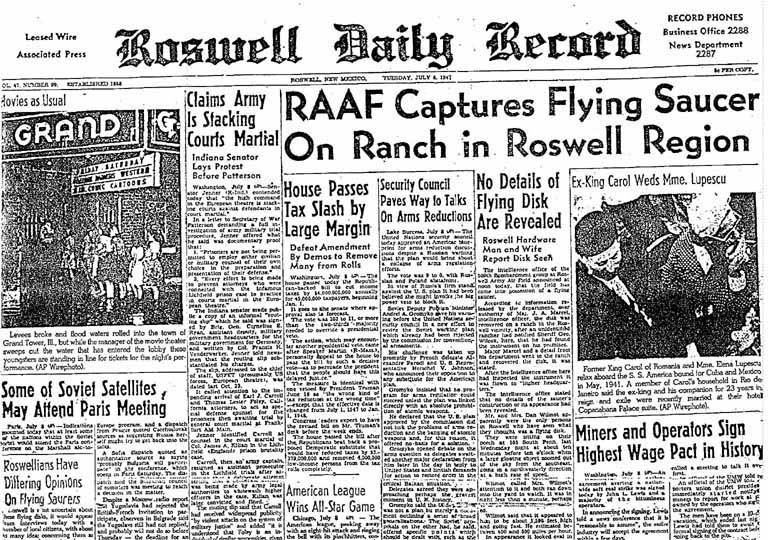

The Roswell Incident is America's most legendary UFO crash though similar impacts have occurred across the planet to upgrade humans and reverse engineer today's technologies including artificial intelligence and space travel. All of this was to enable humans to understand who they are and why they are.
Extraterrestrials and UFOs have always been part of the human experiment as witnessed throughout history and reported in creation myths and legends, art forms, megaliths, monoliths, and rock art found around the world.
Synopsis: On July 7, 1947, an object crash landed on a ranch, approximately 75 miles northwest of Roswell, New Mexico leaving a large field of debris. The local air base at Roswell investigated after the rancher first reported it to Roswell authorities on July 7.
On July 8, the Roswell Army Air Field (RAAF) announced it had recovered a "flying disk". A few hours later, U.S. Army Air Force officials stated that it was not a UFO, but a weather balloon.
When the question of what crashed was revived in the early 1980s, the "Roswell Incident" became a focus of conspiracy theorists, "abductees," and UFO investigators that continues today.
The incident faded from the attention of UFO researchers for over 30 years. In 1978, physicist and ufologist Stanton T. Friedman interviewed Major Jesse Marcel who was involved with the original recovery of the debris in 1947. Marcel expressed his belief that the military covered up the recovery of an alien spacecraft. His story spread through UFO circles, being featured in some UFO documentaries at the time.
In February 1980, the National Enquirer ran its own interview with Marcel, garnering national and worldwide attention for the Roswell incident. Additional witnesses added significant new details, including claims of a large-scale military operation dedicated to recovering alien craft and aliens themselves, at as many as 11 crash sites, and alleged witness intimidation.
In 1989, former mortician Glenn Dennis put forth a detailed personal account, wherein he claimed alien autopsies were carried out at the Roswell base.
Roswell has become the most publicized of all alleged UFO incidents. The Incident has turned into a widely known pop culture phenomenon, making the name "Roswell" synonymous with UFOs.
The timing of the Roswell Incident was all part of a greater agenda - neither human nor alien. None of this would have happened if it wasn't meant to - reality by design.
It is believed crashed UFO's at Roswell and in other parts of the world were not by accident - but to reverse engineer what they discovered/recovered explaining the rapid advancement in technology and the acceleration of the human experiment to closure.
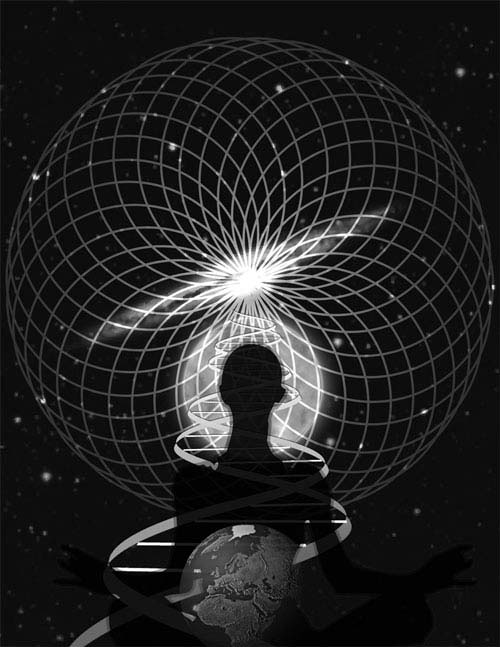
Simulation Theory
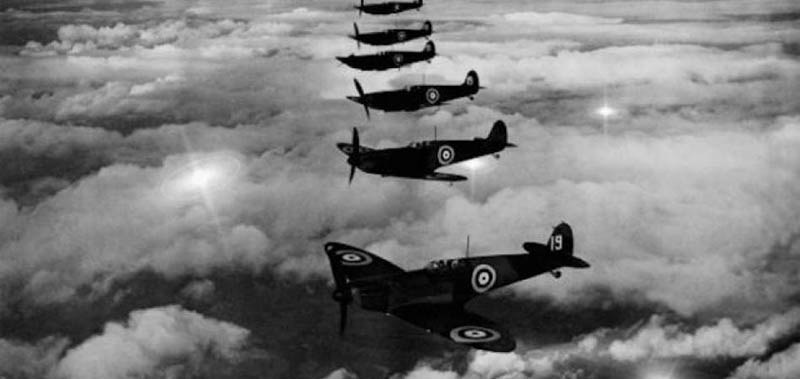
During WWII sightings of foo fighters (balls of light linked to the UFO phenomenon) were witnessed by pilots across Europe - some claiming they were abducted by aliens.
1946: European "ghost rockets" (missle-shaped ufos) involved numerous objects being sighted and tracked by radar, crashes reported, military investigations and searches, and debris fragments reported recovered. The official conclusion was that the ghost rockets were real.
June 21, 1947: Weeks before Roswell - Kenneth Arnold - Maury Island UFO Incident (Washington State)
July 12 to 29, 1952: 1952 Washington, D.C., UFO incident
December 1965: Kecksburg UFO incident was another alleged military crash recovery of a UFO and is sometimes called the "Pennsylvania Roswell."
October 1967: The Shag Harbor incident was the crash of an unknown object in Shag Habor, Nova Scotia, Canada, and involved attempts by the Canadian military to recover the object. The crash object was referred to by several Canadian government agencies, such as the Royal Canadian Mounted Police, as a "UFO".
December 1980: Rendlesham Forest Incident involving many USAF personnel is sometimes called the "British Roswell" because of its importance, though no crash was involved.
January 1986: Height 611 UFO Incident was a Russian crash with analysis of physical debris.
January 1996: Varginha Incident was another alleged recovery of one or more aliens by the Brazilian military.
In recent years, sightings have been recorded/reported by the military and witnesses around the world. The alien experiments on humans ended in 2008. Ships and alien bases below, on, or above the planet no longer function - many disappearing without a trace. What people are witnessing today are drones or projections that monitor the planet so the experiment/simulation in time and emotions closes properly.
The aliens were shape-shifting artificial intelligence - which is one of the reasons AI has become part of mainstream today.
Aliens - in any shape or form - will not be returning. They traveled through wormholes and by various UFO's described by witnesses.
Theories include the fact that humanity has to evolve and find its way into outer space to understand and connect with extraterrestrials. That is not true.
Another theory is that we are too violent a species to interact with extraterrestrials. That is not true.
Is what we see in outer space equivalent to what we call green screen? Yes far out in space. Projected illusion.
Will we ever know the entire truth about who we are, why we were created, and where we are going? Maybe after the simulation (experiment) of reality blinks out of existence.
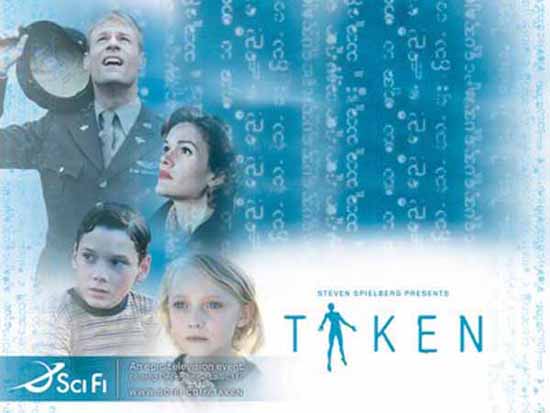
Taken is a science fiction miniseries which first aired on the Sci-Fi Channel in 2002 and won an Emmy Award for Outstanding Miniseries. "Taken" spans five decades (1944-2002) - and four generations centering on three families: the Keys, the Crawfords, and the Clarkes.
Nightmares of abduction and experimentation by extraterrestrials during World War II haunt Russell Keys.
The Roswell incident transforms Owen Crawford from an ambitious Air Force captain to an amoral shadow government conspirator.
The survivor of the Roswell crash - a gray alien taking human form called John - impregnates an unhappily-married Sally Clarke.
As the decades go by, the heirs of each are affected by the machinations of the aliens, culminating with the birth of Allie Keys, the final product of the aliens' experiment and the key to their future.
A number of military and civilian witnesses revised their accounts of what debris found at the scene many years later, reviving interest in the case. Instead of flimsy weather balloon material, the debris allegedly possessed highly anomalous physical properties.
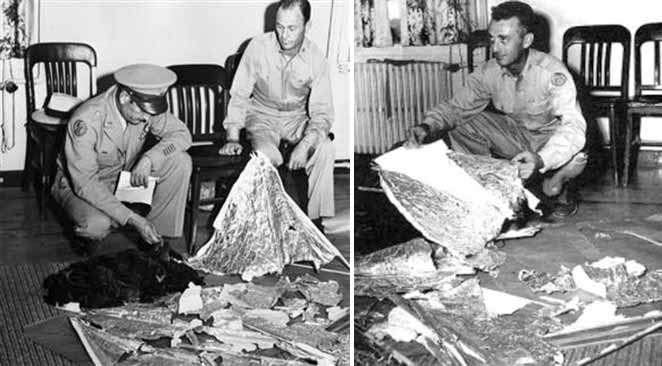
Some material resembled dull aluminum or lead foil yet, when crumpled, straightened back up leaving no creases or wrinkles, similar to a shape memory alloy. Other debris bore some resemblance to balsa wood in lightness and color. Like the foil material, witnesses claimed that it could not be burned, cut, or otherwise damaged. All debris was said to be extremely light in weight.
Debris included metallic-looking "I-beams" said to be covered with strange writing or glyphs.
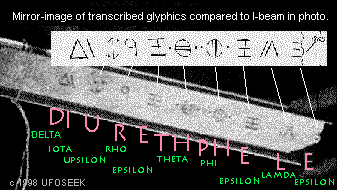
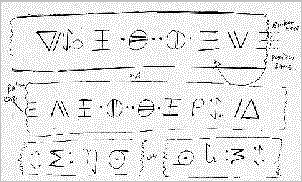
The alleged Roswell Glyphs say "Elephtheria" or "Freedom"
There is another word on the I-bar which, at the time of the first translation, was still unknown. The second word appears on the bottom line of the glyphs block. It is written in forward and also in reverse order. The word Freedom is written backwards in the top line. There is no translation for this reversed sequence. However, the amazing thing is that the second word can be translated both ways! The correct Greek letters to the 4 bottom line characters are I-S-H-R. The literal translation, from the Greek word ishrigmos, means high-frequency sound. The opposite spelling, RHSI, means "saying," "maxim", or "motto!" Another remarkable insight is that when the translation high pitched sound is added to the word freedom, we can apply the suggested "audio" element in the meaning further - Liberaton and Independence.
Unearthed Recording Alleges that Einstein Was Enlisted to Examine Roswell Wreckage
Coast to Coast - October 4, 2021
